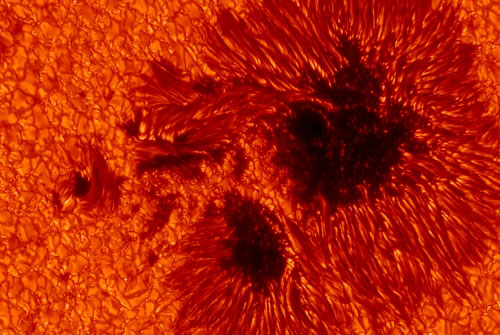 In 2012, Astronomy and Astrophysics published a statistical study of the isotopic records of solar activity, in which Abreu et al. claimed that there is evidence of planetary influence on solar activity. A+A is publishing a new analysis of these isotopic data by Cameron and Schuessler. It corrects technical errors in the statistical tests performed by Abreu et al. They find no evidence of any planetary effect on solar activity.
In 2012, Astronomy and Astrophysics published a statistical study of the isotopic records of solar activity, in which Abreu et al. claimed that there is evidence of planetary influence on solar activity. A+A is publishing a new analysis of these isotopic data by Cameron and Schuessler. It corrects technical errors in the statistical tests performed by Abreu et al. They find no evidence of any planetary effect on solar activity.
Sep 5th, 2013
Read more
Multiple 'secret weapons' will be used on China's Chang'e-3 lunar probe, scheduled to launch at the end of this year for a moon landing mission, a key scientist said on Wednesday.
Sep 5th, 2013
Read more
No one knows for sure, but it is not unlikely that the universe is constructed in a completely different way than the usual theories and models of today predict. The most widely used model today cannot explain everything in the universe, and therefore there is a need to explore the parts of nature which the model cannot explain. This research field is called new physics, and it turns our understanding of the universe upside down. New research now makes the search for new physics easier.
Sep 4th, 2013
Read more
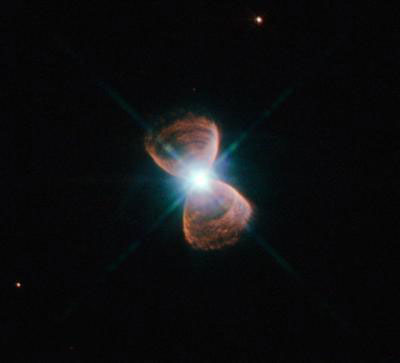 Astronomers have used the NASA/ESA Hubble Space Telescope and ESO's New Technology Telescope to explore more than 100 planetary nebulae in the central bulge of our galaxy. They have found that butterfly-shaped members of this cosmic family tend to be mysteriously aligned -- a surprising result given their different histories and varied properties.
Astronomers have used the NASA/ESA Hubble Space Telescope and ESO's New Technology Telescope to explore more than 100 planetary nebulae in the central bulge of our galaxy. They have found that butterfly-shaped members of this cosmic family tend to be mysteriously aligned -- a surprising result given their different histories and varied properties.
Sep 4th, 2013
Read more
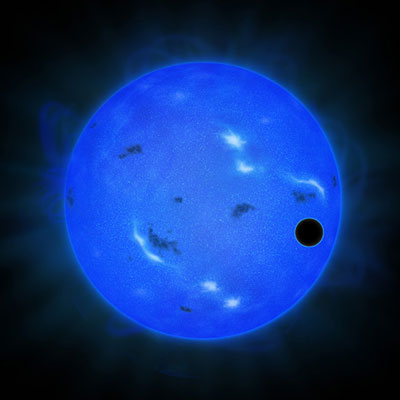 A Japanese research team of astronomers and planetary scientists has used Subaru Telescope's two optical cameras, Suprime-Cam and the Faint Object Camera and Spectrograph (FOCAS), with a blue transmission filter to observe planetary transits of super-Earth GJ 1214 b.
A Japanese research team of astronomers and planetary scientists has used Subaru Telescope's two optical cameras, Suprime-Cam and the Faint Object Camera and Spectrograph (FOCAS), with a blue transmission filter to observe planetary transits of super-Earth GJ 1214 b.
Sep 4th, 2013
Read more
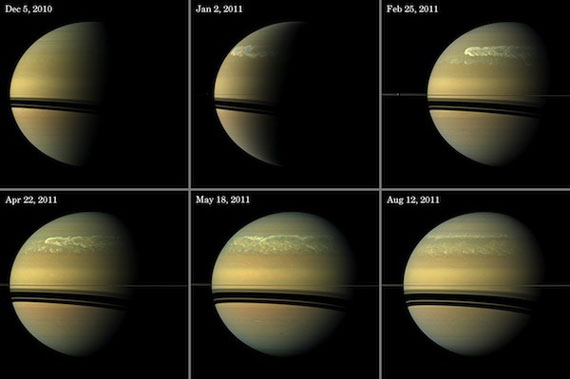 Once every 30 years or so, or roughly one Saturnian year, a monster storm rips across the northern hemisphere of the ringed planet. In 2010, the most recent and only the sixth giant storm on Saturn observed by humans began stirring. It quickly grew to superstorm proportions, reaching 15,000 kilometers (more than 9,300 miles) in width and visible to amateur astronomers on Earth as a great white spot dancing across the surface of the planet.
Once every 30 years or so, or roughly one Saturnian year, a monster storm rips across the northern hemisphere of the ringed planet. In 2010, the most recent and only the sixth giant storm on Saturn observed by humans began stirring. It quickly grew to superstorm proportions, reaching 15,000 kilometers (more than 9,300 miles) in width and visible to amateur astronomers on Earth as a great white spot dancing across the surface of the planet.
Sep 3rd, 2013
Read more
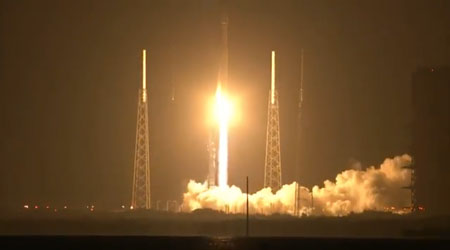 One year after their launch from Cape Canaveral Air Force Station on Aug. 30, 2012, NASA's twin Van Allen Probes have already fundamentally changed how we understand the Van Allen radiation belts above our planet.
One year after their launch from Cape Canaveral Air Force Station on Aug. 30, 2012, NASA's twin Van Allen Probes have already fundamentally changed how we understand the Van Allen radiation belts above our planet.
Sep 3rd, 2013
Read more
 A new approach to the unification of general theory of relativity and quantum theory.
A new approach to the unification of general theory of relativity and quantum theory.
Sep 2nd, 2013
Read more
Potential asteroid impact on Earth can have disastrous consequences. In order to prevent such collisions, earthbound space objects must be deflected. This can be accomplished using a space probe to impact the asteroid.
Sep 2nd, 2013
Read more
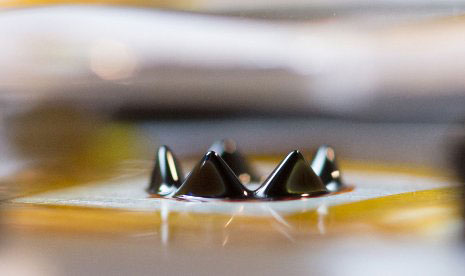 New electrospray thrusters for nanosatellites face some design challenges. To get around the problem, King and his team have developed an elegant strategy: eliminate the expensive and tedious microfabrication required to make the needles by letting Mother Nature take care of the assembly.
New electrospray thrusters for nanosatellites face some design challenges. To get around the problem, King and his team have developed an elegant strategy: eliminate the expensive and tedious microfabrication required to make the needles by letting Mother Nature take care of the assembly.
Aug 30th, 2013
Read more
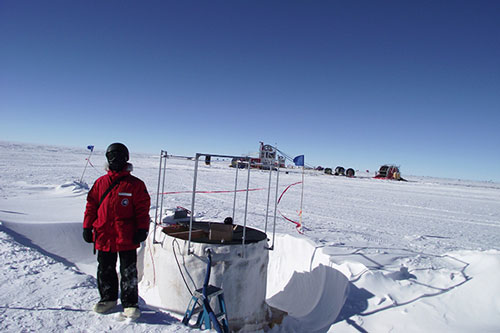 The origin of cosmic rays in the universe has confounded scientists for decades. But a study by researchers using data from the IceCube Neutrino Observatory at the South Pole reveals new information that may help unravel the longstanding mystery of exactly how and where they are produced.
The origin of cosmic rays in the universe has confounded scientists for decades. But a study by researchers using data from the IceCube Neutrino Observatory at the South Pole reveals new information that may help unravel the longstanding mystery of exactly how and where they are produced.
Aug 30th, 2013
Read more
The proposals selected for Phase 2 of the 2013 NIAC Program address a range of visionary concepts including photonic laser thrusters, extreme sample return, and innovative spherical robots designed for planetary exploration.
Aug 30th, 2013
Read more
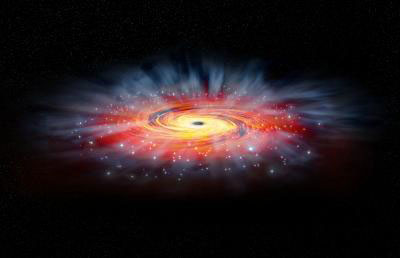 Astronomers using NASA's Chandra X-ray Observatory have taken a major step in explaining why material around the giant black hole at the center of the Milky Way Galaxy is extraordinarily faint in X-rays. This discovery holds important implications for understanding black holes.
Astronomers using NASA's Chandra X-ray Observatory have taken a major step in explaining why material around the giant black hole at the center of the Milky Way Galaxy is extraordinarily faint in X-rays. This discovery holds important implications for understanding black holes.
Aug 29th, 2013
Read more
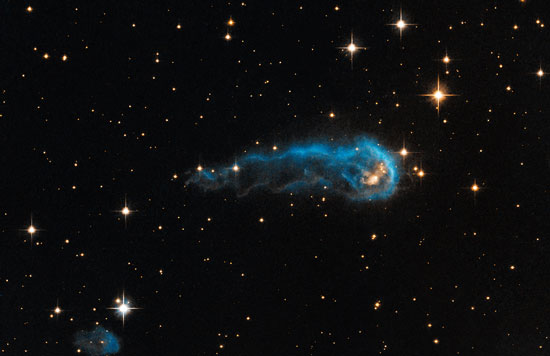 The light-year-long knot of interstellar gas and dust, seen in this Hubble photo, resembles a caterpillar on its way to a feast. Harsh winds from extremely bright stars are blasting ultraviolet radiation at this 'wanna-be' star and sculpting the gas and dust into its long shape.
The light-year-long knot of interstellar gas and dust, seen in this Hubble photo, resembles a caterpillar on its way to a feast. Harsh winds from extremely bright stars are blasting ultraviolet radiation at this 'wanna-be' star and sculpting the gas and dust into its long shape.
Aug 29th, 2013
Read more
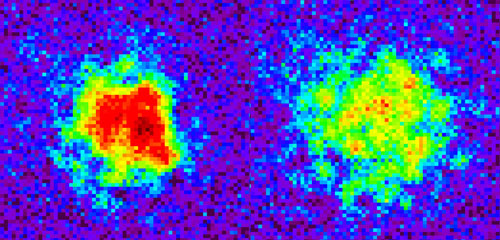 Physicists have reproduced a pattern resembling the cosmic microwave background radiation in a laboratory simulation of the Big Bang, using ultracold cesium atoms in a vacuum chamber at the University of Chicago.
Physicists have reproduced a pattern resembling the cosmic microwave background radiation in a laboratory simulation of the Big Bang, using ultracold cesium atoms in a vacuum chamber at the University of Chicago.
Aug 29th, 2013
Read more
China's Chang'e-3 lunar probe is scheduled to be launched at the end of this year for a moon landing mission, the State Administration of Science, Technology and Industry for National Defence announced on Wednesday.
Aug 29th, 2013
Read more
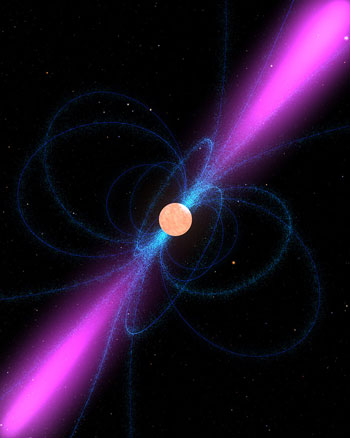 The combined computing power of 200,000 private PCs helps astronomers take an inventory of the Milky Way. The Einstein@Home project connects home and office PCs of volunteers from around the world to a global supercomputer. Using this computer cloud, an international team analysed archival data from the CSIRO Parkes radio telescope in Australia. Using new search methods, the global computer network discovered 24 pulsars.
The combined computing power of 200,000 private PCs helps astronomers take an inventory of the Milky Way. The Einstein@Home project connects home and office PCs of volunteers from around the world to a global supercomputer. Using this computer cloud, an international team analysed archival data from the CSIRO Parkes radio telescope in Australia. Using new search methods, the global computer network discovered 24 pulsars.
Aug 29th, 2013
Read more
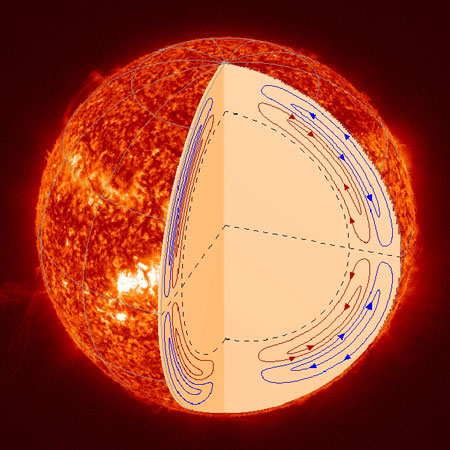 Using an instrument on NASA's Solar Dynamics Observatory, called the Helioseismic and Magnetic Imager, or HMI, scientists have overturned previous notions of how the sun's writhing insides move from equator to pole and back again, a key part of understanding how the dynamo works. Modeling this system also lies at the heart of improving predictions of the intensity of the next solar cycle.
Using an instrument on NASA's Solar Dynamics Observatory, called the Helioseismic and Magnetic Imager, or HMI, scientists have overturned previous notions of how the sun's writhing insides move from equator to pole and back again, a key part of understanding how the dynamo works. Modeling this system also lies at the heart of improving predictions of the intensity of the next solar cycle.
Aug 29th, 2013
Read more
 In 2012, Astronomy and Astrophysics published a statistical study of the isotopic records of solar activity, in which Abreu et al. claimed that there is evidence of planetary influence on solar activity. A+A is publishing a new analysis of these isotopic data by Cameron and Schuessler. It corrects technical errors in the statistical tests performed by Abreu et al. They find no evidence of any planetary effect on solar activity.
In 2012, Astronomy and Astrophysics published a statistical study of the isotopic records of solar activity, in which Abreu et al. claimed that there is evidence of planetary influence on solar activity. A+A is publishing a new analysis of these isotopic data by Cameron and Schuessler. It corrects technical errors in the statistical tests performed by Abreu et al. They find no evidence of any planetary effect on solar activity.
 Subscribe to our Space Exploration News feed
Subscribe to our Space Exploration News feed










